Max Mara
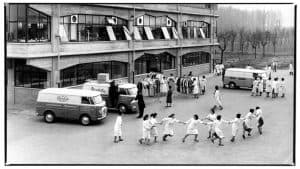
With no one person behind the label and company philosophy that no individual to be given more importance than the process, the Italian fashion house of Max Mara stands tall today as the precursor of modern prêt-à-porter fashion. Founded in the post-war period, the company aimed at offering “haute de gamme” clothing, produced by excellent industrial processes.
Index
The Origin
Brand Development
Sister Labels
Max Mara Style
Exhibitions/Museum
Current Situation
The Origin
Max Mara founder, Achille Maramotti was born in Reggio Emilia, Italy on 7th January 1927. His mother Giulia ran a tailoring shop, while his father was a professor of literature who died when Achille was 12.
Love for tailoring and a passion for dressmaking were the key aptitudes handed down by the great-grandmother of the founder, Marina Rinaldi. At the end of nineteenth century, around 1850s Marina Rinaldi herself managed a luxury atelier in the heart of Reggio Emilia where everything was done by hand with great attention to detail and the finishing touches.
This deep-rooted passion was handed down to her granddaughter, Giulia Fontanesi Maramotti who in 1925 started teaching modelling and sewing and published a series of books dedicated to the “theory of cutting”. In her teaching career, Giulia Maramotti created the “Maramotti Cutting and Dressmaking School” to train artisans and technicians capable of producing models of garments from a sketch or fashion plate.
Achille Maramotti was born in an environment where it was impossible to not learn the art of dressmaking. A recent law graduate in the year 1951, Maramotti at just 24 years old decided to devote himself to tailoring. And the training provided by the School allowed him to quickly find highly qualified personnel with great manual skills, essential for the development of the company “Confezioni Maramotti”, the birth name of Max Mara, chosen in honor of his mother’s activity.
The desire was to produce high quality packaged women’s clothing, an avant-garde concept in a country like Italy where fashion was still exclusively an artisanal activity.
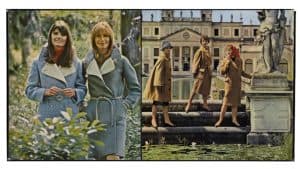
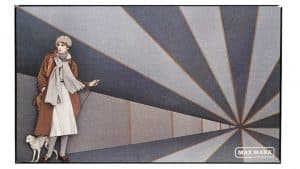
Brand Development
Achille Maramotti founded Max Mara in 1951, he wanted a name that could be pronounced in any language and yet hinted at no one in particular. The “Max” came from a local character called Count Max, a man perennially drunk but always dashing, “Mara” from the family surname.
In the very beginning, Maramotti had to persuade the fabric shops from where the women bought fabrics to be then given to the local seamstress, to display his wares. This was as some would call the first leg of marketing of the house.
Max Mara’s first collection was presented in the year 1957 for Fall/Winter 1957-1958. The first collection of the house included their signature, camel coat and a red geranium suit. Essentiality and precision, clean cuts and rigorous lines were what to become the house’s staple were first seen through this collection. And success came immediate.
Max Mara evolved the production techniques in the 1960s thus, evolving the products themselves. The collections were now becoming more trendy that included both elegant and sporty suits. Around this time, Max Mara Fall/Winter 1960 collection was featured in the “Arianna” editorial. Max Mara ‘Pop’ collection of Autumn/Winter 1965-1966 was made possible because, the creative staff at this time was enriched with prominent personalities like Luciano Soprani, Lison Bonfis, Graziella Fontana and Emanuelle Khan. The Sportmax collection was presented in the year 1969 for Fall/Winter 1969-1970.
For the Sportmax collection of Fall/Winter 1970-1971, the campaign was photographed by celebrated French model turned photographer, Sarah Moon. The collection got a mention in “Grazia” and “Arianna”. At the end of the sixties, London was becoming the capital of ideas and fashion. Maramotti was among the firsts to take inspiration from the changing fashion of the times and deliver in the best way possible. Thanks to Laura Lusuardi one young woman at that time, today the Group’s fashion director, the Sportmax collection was based on young women who wanted to be different than their contemporaries.
In the mid 1970s, the house saw stylistic collaborations with Anne Marie Beretta, Nanni Strada, Guy Paulin, Jacques Delahaye, Jean Charles de Castelbajac and others. All contributions that enhanced the brand had been kept anonymous, following the company philosophy: visibility to the brand rather than to individual names. The Max Mara Fall/Winter 1976 advertising campaign was photographed by Sarah Moon that got a lot of positive attention.
One of the prominent symbols of the house came into existence in the 1980s, the double-breasted coat “101801” designed by Anne Marie Beretta, with kimono sleeves in mixed cashmere wool, an absolute best-seller and since then offered in every winter collection without any modification. The Fall/Winter campaigns for 1982-1983 and 1985-1986 for Sportmax collections was photographed by the famous German photographer and film director, Peter Lindbergh known for his cinematic images. Max Mara launched the first issue of MM magazine in 1989, the house organ that is still today the bible of fashion for loyal customers.
A strong consolidation of the Group was seen in the 1990s. Famous photographers such as Peter Lindbergh, Arthur Elgord and Richard Avedon were called to interpret brand’s advertising campaigns. Max Mara Fall/Winter collection for 1993-1994 was photographed by Max Vadukul, British photographer noted for his art reportage photography. And the same year, the Fall/Winter collection 1993-1994 campaign for Sportmax was photographed by Scottish photographer known for his fashion and art photography.
For the Max Mara Fall/Winter 1997-1998 campaign model Linda Evangelista was photographed by American fashion photographer Steven Meisel. The Max Mara Fall/Winter 1998-1999 campaign was photographed by Richard Avedon, an American fashion and portrait photographer.
Craig McDean, a British photographer from Manchester but based in New York photographed the house’s 2004-2005 and 2007-2008 Fall/Winter campaigns. The Max Mara 2005-2006 collection coat was created for the Winter Olympics held in Turin, Italy and photographed by the same. In Reggio Emilia, following a long illness, the founder of the label Achille Maramotti passed away. He left the administration of the company in the hands of his three children, Maria Ludovica, Luigi, and Ignazio.
“Coats! Max Mara, 55 years of Italian fashion” was launched at the Kultureforum in Berlin, Germany in 2006. The exhibition celebrates the rich history of Max Mara and the characteristic coats from the archive.
The Max Mara Art Prize for Women was awarded the prestigious British Council Arts and Business International Award in March 2007. The Max Mara Art Prize for Women in collaboration with the Whitechapel Gallery reflects the close relationship the house has with both the female as well as the art world. The biennial prize is open to all forms of artistic expression and aims to promote and support young female artists residing in the United Kingdom.
The Fall collection of 2008 for Max Mara, consisted of strong-shouldered blazers over dresses and sharp-line pants taking inspiration from Roxy Music era London glam. The campaign was photographed by Craig McDean.
Max Mara Fall 2009 collection was full of luxurious coats. Coats in fabrics like cashmere, alpaca and camel’s hair were on display this fall. Attention was paid to the neckline of jackets. The campaign was photographed by Mario Sorrenti, an Italian photographer and director based in New York. The Fall/Winter 2010 collection of Max Mara displayed again what the house does best: coats. Greatcoats, stand-up collars, rows of buttons on shoulders, long skirts in navy, gray, khaki and stone formed the core.
The collection that took a great deal of its inspiration from futuristic elements was that of the Fall/Winter 2011. The colours, shapes and the cuts resonating a strong technology and sci-fi influence. the Max Mara resort 2012 collection was in sync with the house’s previous collection. This collection was very much inspired from the seventies and displayed a stark white suit, printed caftans, long tunic dresses, flared trousers and silk blouses.
The Fall collection of 2014 showcased garments that reminded the people of Scotland. This collection used a lot of tweeds, plaids and ‘Prince of Wale’ checks. Pencil skirts were popular in the collection along with the colour gold and a vibrant shade of lichen green. The fall 2015 collection took inspiration from the 1960s Marilyn Monroe pictures that photographer George Barris took of her. But as usual the coats were in limelight for this collection.
For the Resort 2016 collection, creative director Ian Griffiths was influenced by athleisure. This collection included capes, coats worn over scooped-necked shirts, racerback vests, trousers and mink head-guards and mittens along with leather boxing shorts. The Fall 2017 collection took a political turn when Halima Aden Somali-American model walked for Max Mara wearing a hijab. A conscious decision made by the brand to set an example for the industry in favor of bringing cultural diversity to the forefront of fashion.
The recent collection presented was Fall 2018, this season the central idea was that, it’s time for women to feel strong, hence included models were Lara Stone, Doutzen Kroes, Joan Smalls, and Halima Aden—and also the daughters of ’80s supermodels, Gigi Hadid and Kaia Gerber. All of them had to carry some pretty fierce propositions: total looks in animal print, slick black leather, English tweed, checks, and blanket materials. There were overcoats, floor-sweeping kilts, and pencil skirts worn over narrow trousers or stirrup pants.
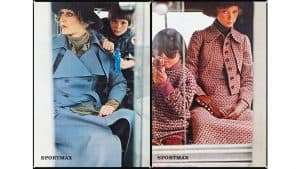
SISTER LABELS
The Max Mara Group in recent times is a model and reference point for Italian and International ready-to-wear fashion. Max Mara group today comprises of 41 companies and more than 5000 employees, operating in 105 countries worldwide.
Max Mara womenswear is at the core of the brand, that speaks of feminism through its products. Max Mara wants women to be noticed for all the right reasons and dresses them to succeed. Some of the ‘sister’ labels include:
Sportmax: Conceived in 1969 by Max Mara’s creative team as a more practical and eclectic proposal compared to the company’s stylistic tradition.
Weekend Max Mara: It is the “life-style” line by Max Mara Group. Launched in 1984 as a casual, outdoor collection ideal for week-ends, evolving rapidly over the years.
Max&Co: It is a project dedicated to young women searching for a personal style made of dresses, accessories and ideas to be freely mixed creating new and transversal languages and codes.
Marella: Marella offers a complete and diversified collection with a fresh and contemporary feel in line with today’s mood and lifestyle. Every season, different collections are presented alongside the main line of tricots and other knits, sport collection dedicated to leisure wear and the accessories line to personalize one’s look.
iBlues: iblues is a sensual and feminine brand characterized by eye-catchy shapes and colours. It is aimed at young and bold women. Founded in 1975 as a collection of coordinating items on knitwear, iblues became a collection of total look items by the end of the eighties.
Pennyblack: Pennyblack signs a contemporary style which gathers all the strongest trends of the season with a modern yet practical and playful twist. The brand is divided into three labels; Pennyblack Black Label: workwear with a functional and smart everyday look. Pennyblack Grey Label: easy and trendy. It boasts casual yet cool ideas for leisure. Pennyblack Pink Label: uses clean silhouettes, splashes of colour and hi-tech fabrics.
Marina Rinaldi: Marina Rinaldi has represented a milestone in costume history by being the first in the world to propose a collection of clothes and accessories for curvy women.
Persona: Persona targets all young women with an innovative and transversal concept. It describes itself as a line, where freedom is synonymous with shapes and modern is synonymous with dynamic.

MAX MARA STYLE
Achille Maramotti’s main desire was to create pieces of clothing for women with aspirations. Being a forward-thinking man, he identified that the middle class would be the most powerful force in society and that clothing would develop in the post-war period as an industrial phenomenon as opposed to something produced in a couture atelier.
The house’s creative director, Ian Griffiths says, “His idea was very much about creating high-quality clothing for the wife of the local doctor or the local solicitor”. But as the time passed and “the wives of the doctors and solicitors became the doctors and solicitors”, Max Mara’s refined and luxurious style evolved into a full wardrobe for working women that reached its height during the power dressing era of the 80s.
The label describes itself as a sartorial tradition, luxurious, experimental, international and modern.
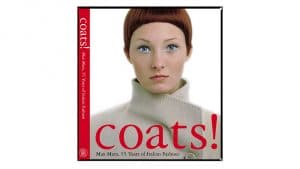
EXHIBITIONS/MUSEUM
Collezione Maramotti: When Max Mara moved to new headquarters on the outskirts of Reggio Emilia in 2003. It was then decided that the original building will house the collection of contemporary art acquired by the company’s founder, Achille Maramotti. The building’s conversion was done by English architect Andrew Hapgood.
In April 2015, the Whitney Bag was introduced. To celebrate the Whitney Museum, Max Mara creative director Ian Griffiths teamed up with the Renzo Piano Building Workshop on a limited-edition “Whitney Bag,” inspired by the shape of the building. The Italian fashion group also held a dinner and preview at the museum while launching the bag to pay homage to the founder of the museum Gertude Vanderbilt Whitney.
“Coats! Max Mara, 60 Years of Italian Fashion”, a travelling exhibition that celebrates not only the anniversary of the Italian fashion house, but also the design and historical importance of the humble overcoat. The exhibition started its travel in 2006 in Berlin at National Museums. Then after stops in Tokyo and Beijing, it landed at the State Historical Museum in Moscow. And last year in November it travelled to Soeul in South Korea where the exhibit was in display at Dongdaemun Design Plaza designed by Zaha Hadid, till December.
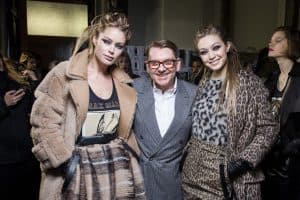
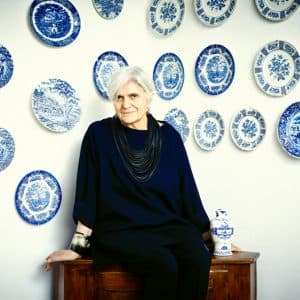
CURRENT SITUATION
The label Max Mara has spread its wings since its beginning in 1951. It now comprises of 2668 stores in more than 100 countries. Its annual turnover was €1.38 billion in 2015 for the Max Mara Fashion Group, which comprises of nine brands.
Ian Griffiths is the man behind the discreet luxury Max Mara’s classic designs. Born and bred in the UK, he learnt his craft in Manchester and then in London, before joining Max Mara as a designer upon graduating. 28 years later Griffiths is the creative director and continues to work his magic.
Laura Lusardi is the cultural custodian of Max Mara. She acts as the fashion director for the company after being in the business for 53 years, initially joining as a 16-year-old shop girl/stylist in 1964.
